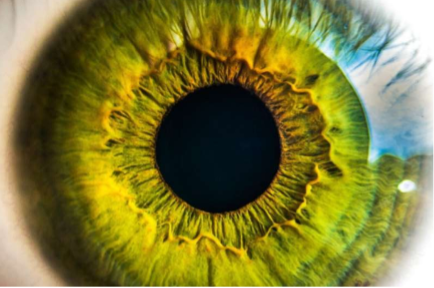Precision eye therapy for dogs ready for human clinical development
April 28, 2023
Source: drugdu
 278
278

A successful gene therapy trialed at Michigan State University in dogs with an inherited eye disease is ready to be developed for clinical use in human patients with a rare condition called retinitis pigmentosa.
Simon Petersen-Jones, professor and Donald R. Meyers and William E. Dunlap Endowed Chair in Canine Health at the Michigan State College of Veterinary Medicine, and his collaborators have published "Development of a translatable gene augmentation therapy for CNGB1-Retinitis Pigmentosa" in Molecular Therapy.
Retinitis pigmentosa encompasses a group of rare genetic diseases that cause vision loss due to death of the light-sensing cells in the retina. Vision loss begins at a young age, and progresses throughout the lifespan.
"There is currently an unmet need for treatment to save the vision of patients with CNGB1-retinitis pigmentosa," Petersen-Jones said. "This promising therapy that works so well in dogs is now sufficiently developed that the next step is to take it forward for a clinical trial in human patients."
The Cleveland Clinic estimates that retinitis pigmentosa affects approximately 2 million people worldwide, 100,000 of whom are in the U.S. Currently, there is no cure, but this therapy may be able to halt vision loss in patients with this specific form of retinitis pigmentosa.
About the research
Humans and dogs share a gene—cyclic nucleotide-gated channel beta 1 (CNGB1)—that when mutated, causes eye disease. Dogs develop a form of progressive retinal atrophy, while people develop a form of retinitis pigmentosa.
Because the gene therapy works in dogs with progressive retinal atrophy due to CNGB1 gene mutations, and because humans develop retinitis pigmentosa (the human equivalent of progressive retinal atrophy in dogs) due to CNGB1 gene mutations, the therapy is now ready to be developed to help people with CNGB1-retinitis pigmentosa.
"We are very hopeful that this therapy will show the same positive results as seen in dogs in a human clinical trial and lead to a successful FDA-approved therapy for CNGB1-retinitis pigmentosa," says Petersen-Jones.
In the study, Petersen-Jones used an adeno-associated virus (AAV) vector to deliver a normal copy of the CNGB1 gene under control of a novel gene promoter. The novel promoter, which was developed by Petersen-Jones' collaborators, is a modified form of the promoter for human rhodopsin, an important gene in retinal rod cells. The novel promoter ensures that the CNGB1 introduced by the therapeutic is only active in the target cell–the rod photoreceptor.
The AAV is a serotype 5 packaged with the short rhodopsin promoter, CNGB1 gene combination (AAV5-RHO-CNGB1). The therapy is injected under the retina so that it is introduced to the target light-sensing rod cells, which require normal CNGB1 to function and survive.
The therapeutic:
- Rescues normal function in rod cells and restores rod-mediated vision by introducing a normal working copy of CNGB1
- Halts the accumulation of toxic amounts of cyclic guanosine monophosphate in normally functioning rods, which—if unabated—causes cell death
- Preserves cone function—which—in untreated eyes, is lost as rod cells die
- Preserves retinal structure by stopping photoreceptor degeneration
This study involved 20 authors that span 8 international institutions including academia and industry. Their findings establish the gene therapy's long-term efficacy, and are the result of previous research.
Provided by Michigan State University
By editorRead more on
- Multiple batches of quadrivalent influenza virus split vaccine have been sub-packaged and submitted for lot release approval; expected to be released to the market soon after approval December 12, 2025
- Ab&B Bio-Tech CO., LTD. JS Lyophilized Human Rabies Vaccine Initiates Phase III Clinical Trials December 12, 2025
- The ‘Sweetest’ HPV Vaccine Market is Gone | Haibin Interview December 12, 2025
- InnoCare Pharma announced that its first independently developed next-generation TRK inhibitor, zoletrazinib, has been approved for marketing in China December 12, 2025
- Is PD-1/VEGF dual antibody + ADC becoming the standard configuration? December 12, 2025
your submission has already been received.
OK
Subscribe
Please enter a valid Email address!
Submit
The most relevant industry news & insight will be sent to you every two weeks.



